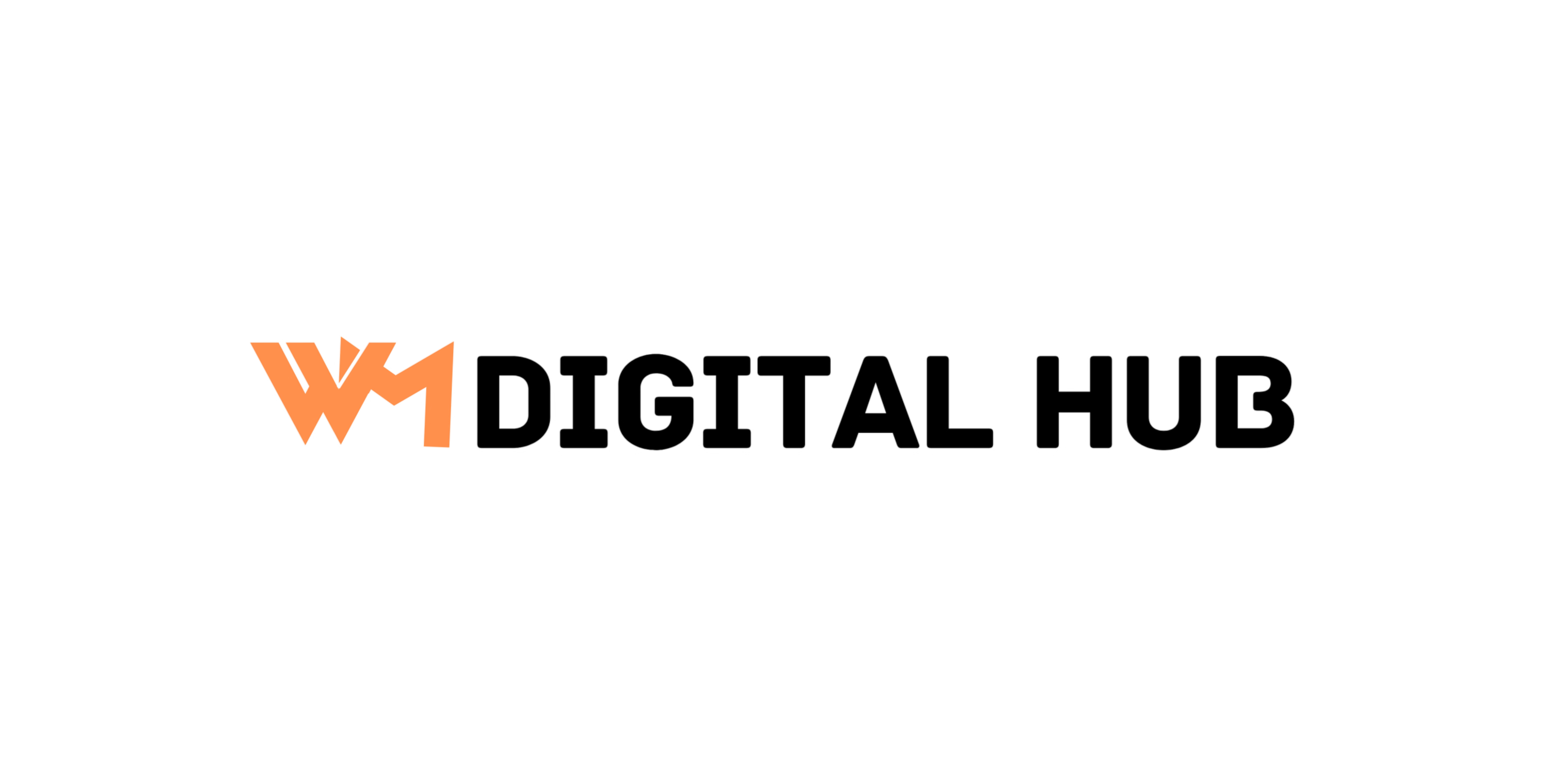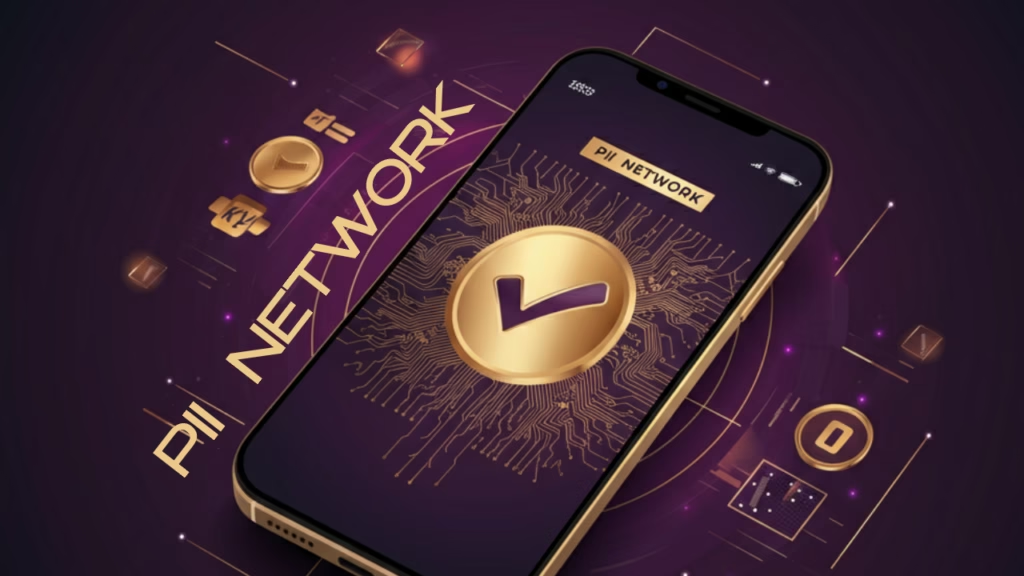Wondering how to start freelancing without experience in 2025? You’re not alone. Many beginners feel stuck, thinking, “Who would hire me if I don’t have a portfolio or past clients?” The truth is, almost every successful freelancer started the same way—with zero experience, just a laptop, and the determination to learn.
The good news is that you don’t need years of professional work to begin your freelancing journey. In 2025, the opportunities for freelancers are bigger than ever. Thanks to AI tools, online learning platforms, and the growing demand for digital services, even complete beginners can land clients and start building a career online.
Imagine being able to work from home, choose your own clients, and create a flexible lifestyle that fits you—not the other way around. That’s exactly what freelancing offers. And in this step-by-step guide, I’ll show you how to go from zero to your very first client without stressing over lack of experience. You’ll learn how to:
- Identify beginner-friendly skills you already have
- Build a simple portfolio without paid clients
- Create a strong freelance profile that gets noticed
- Land your first job and start scaling from there
If you’ve been waiting for the perfect time to start freelancing, this is it. Your journey begins today. 🚀

How to Start Freelancing Without Experience in 2025 (Step-by-Step Guide)
Step 1: Identify Your Skills (Even if You’re a Beginner)
The first step to starting freelancing without experience is figuring out what skills you can offer. The good news is—you don’t need to be an expert or have a degree to get started. In fact, many high-demand freelance jobs are beginner-friendly and can be learned quickly with free resources.
Think about the everyday skills you already have. Are you good at writing emails, organizing tasks, posting on social media, or researching online? Believe it or not, these are valuable services businesses pay freelancers for. The trick is to recognize and package them as freelance skills.
Here are a few beginner-friendly freelancing skills you can explore in 2025:
- Content Writing & Blogging – If you can write clearly, you can start as a writer.
- Virtual Assistance – Handling emails, scheduling, and basic admin tasks.
- Social Media Management – Creating posts, engaging with followers, and growing accounts.
- Canva Design – Simple graphics, posters, and presentations without advanced design knowledge.
- Data Entry & Research – Organizing information, managing spreadsheets, and online research.
- Basic Video Editing – Using free tools like CapCut or Canva to edit short clips.
👉 The best part? You can learn these skills for free using platforms like:
- Coursera (free courses with certificates)
- Skillshare
- YouTube (practical tutorials for almost everything)
- HubSpot Academy (great for digital marketing basics)
By picking just one or two skills, practicing them, and building small samples, you’ll be ready to take your first step into freelancing.

Step 2: Create a Simple Portfolio (or Portfolio Website)
Once you’ve identified your skills, the next step is to showcase them in a professional way. Clients don’t just want to hear about what you can do—they want to see proof. That’s where a portfolio comes in.
Think of your portfolio as your digital shop window. Even if you don’t have real clients yet, you can create practice projects, mock-ups, or case studies to demonstrate your ability. This instantly builds credibility and gives clients confidence to trust you.
How to Create a Portfolio Without Experience
- Do Practice Projects: If you’re a designer, create sample logos for imaginary brands. If you’re a writer, write a few blog posts on trending topics. If you’re into social media, design a content calendar for a “mock business.”
- Use Free Platforms First: You don’t need to spend money at the beginning. Tools like Behance, Dribbble, or even Google Drive folders can work as your starter portfolio.
- Write Context for Each Sample: Don’t just upload files. Add a short description explaining what the project is about and what skill it demonstrates. Example: “Sample blog post about digital marketing trends—written to showcase engaging and SEO-optimized writing.”
Why a Portfolio Website is Even Better
If you want to stand out in 2025, having your own portfolio website gives you a serious edge. Instead of sending clients to multiple links, you can share one professional website where everything is neatly organized.
- Easy Tools for Beginners: Platforms like Wix, WordPress, or Carrd let you build a simple website without coding.
- Custom Domain: Buying a domain like yourname.com looks more professional than sharing random links.
- Control & Branding: Unlike freelancing platforms, your website is fully yours. You can highlight your services, showcase your work, and even add testimonials once you start getting clients.
Pro Tip 💡
Even a one-page portfolio website can make a big difference. Imagine a client comparing two beginners: one sends a plain resume, the other sends a clean website with samples, bio, and contact details. Who do you think gets hired?

Step 3: Find Your First Client
Landing your very first client is often the biggest challenge when starting freelancing without experience. This step can feel scary, but once you crack it, everything becomes easier. Think of your first client as your starting point—someone who gives you the chance to prove yourself, gain confidence, and start building your portfolio.
Here are two of the most effective ways to land your first client in 2025:
Freelancing Platforms
If you’re just starting freelancing without experience, one of the easiest ways to find your first client is through freelancing platforms. Think of websites like Upwork, Fiverr, and Freelancer as busy marketplaces where thousands of clients are already looking for freelancers every single day. Instead of chasing opportunities, you step into a place where opportunities naturally exist.
But here’s the key: success on these platforms doesn’t come from simply creating an account—it comes from standing out.
- Build a professional profile that clearly highlights your skills, even if they’re from practice projects or self-learning. Clients care more about what you can do for them than your past job titles.
- Write personalized proposals instead of copy-paste messages. Show clients you understand their project by addressing their needs directly.
- Start small with entry-level gigs. Your first goal isn’t to make big money but to build trust, reviews, and credibility.
- Stay online and active. Clients love freelancers who respond quickly, and being available can instantly increase your chances of getting hired.
The magic is that once you land just one or two clients and deliver great work, everything shifts. Those first positive reviews act as proof of your skills, and suddenly you’ll notice more clients reaching out to you instead of the other way around.
How to Make Your Freelancing Profile Stand Out
Now that you know where to start (Fiverr and Upwork being the best choices for beginners in 2025), the next step is to make your profile shine. Think of your freelancing profile as your digital resume + shop window. It’s the first thing clients see before deciding whether to trust you with their project. If it looks weak or confusing, they’ll scroll past. But if it looks professional, clear, and client-focused, you can win jobs—even without past experience.
Here’s how to set yourself apart:
1. Pick a Clear Niche
Trying to “do everything” often backfires because it makes you look unfocused. Instead, specialize in one or two related services.
- ❌ Weak: “I do writing, design, and video editing.”
- ✅ Strong: “I help small businesses grow with engaging blog posts and SEO-friendly content.”
Specialists are more trustworthy than generalists.
2. Write a Client-Focused Bio
Most beginners write bios all about themselves: “I’m new but hardworking.” Clients don’t care about your story—they care about results.
- ❌ Weak Bio: “I am a beginner graphic designer with little experience but I am hardworking.”
- ✅ Strong Bio: “I design clean, eye-catching logos and social media posts that help small businesses attract customers and grow online.”
Notice how the second version highlights client benefits instead of personal struggles.
3. Use Relevant Keywords
Freelancing platforms work like search engines. If clients type “virtual assistant” or “SEO writer” and those terms aren’t in your profile, you won’t show up. Naturally add keywords in your title, bio, and skills section so clients can actually find you.
4. Upload a Professional Photo
Profiles with a clear, friendly headshot always perform better. Avoid blurry selfies, group shots, or distracting backgrounds. Good lighting + a confident smile = instant trust.
5. Showcase Portfolio Samples
Remember the practice work you built earlier? Upload those as samples. Add short descriptions to explain what each sample demonstrates.
Example: “Sample blog post on digital marketing trends—written to show engaging, SEO-optimized content style.”
Even if you’ve never worked with a client, these samples prove your ability.
6. Start with Fair Prices
Pricing is tricky, but as a beginner, you need to balance value and credibility. Start slightly below market rates until you build reviews, then raise your prices.
Example: If the average logo design costs $50, start around $15–20. After 3–5 good reviews, increase to $30–40.
7. Craft a Strong Headline
Your title is what grabs attention. Make it clear, benefit-driven, and keyword-rich.
- ❌ Weak: “I will design logos.”
- ✅ Strong: “I will design a modern, professional business logo that makes your brand stand out.”
On Upwork, it could be:
“SEO Content Writer | Helping Businesses Rank Higher with Engaging Blogs.”
Why This Matters
In freelancing, first impressions can make or break you. Many beginners fail not because they lack talent, but because their profiles look generic or unprofessional. A polished, client-focused profile builds instant trust, even if you’re just starting freelancing without experience.
If your freelancing profile shows clarity, professionalism, and client value—you’ll stand out in a sea of competitors and give yourself the best chance to land your very first client.

Establishing Social Media Profiles
And the second easiest ways to start freelancing without experience is by creating strong social media profiles. Think of platforms like LinkedIn, Twitter (X), Instagram, or even TikTok as your online portfolio. Even if you don’t have clients yet, you can still use these platforms to showcase your skills, share your learning journey, and build trust with potential clients.
For example, if you’re learning graphic design, post your practice work on Instagram. If you’re starting in writing, share short tips or writing samples on LinkedIn. Over time, people will notice your consistency and may reach out for work.
Another big advantage of social media is networking. Clients often prefer hiring freelancers they’ve seen active online because it feels more personal and trustworthy. By engaging with industry-related posts, joining relevant groups, and sharing valuable insights, you position yourself as someone serious about freelancing.
Remember:
- Use a professional profile picture.
- Write a clear bio/description that highlights your skills.
- Stay consistent with your posts (even 2–3 times a week is enough).
This approach helps you build credibility before you have formal experience, making it much easier to land your first freelance job.
Step 4: Start Small – First Gigs & Clients
Landing your first client is often the most challenging yet exciting part of your freelancing journey. If you’ve ever thought, “I have no experience, how will anyone hire me?”, you’re not alone. Every successful freelancer once faced the same fear. The secret is to start small, focus on learning, and gradually build your reputation.
Think of freelancing like learning to ride a bike. You don’t start on a busy highway—you begin on an empty street, practicing and gaining confidence before moving on to bigger roads. Similarly, small projects serve as your practice ground. They help you understand client expectations, improve your skills, and generate the reviews that will make your profile stand out.
The first step is to look for entry-level opportunities on platforms like Fiverr and Upwork. These can be simple projects such as writing a short blog post, designing a single logo, creating a few social media graphics, or doing basic data entry. While these may seem small, they are crucial stepping stones. Completing them successfully builds your portfolio, your confidence, and your credibility.
When reaching out to potential clients, it’s important to personalize your proposals rather than sending generic messages. A well-crafted proposal should demonstrate that you understand the client’s needs and explain how your skills can help solve their problem. For example, if a client needs a blog post about fitness, you can mention a related sample you created and explain how your writing will engage their readers. This approach immediately sets you apart from beginners who rely on copy-paste messages.
Pricing is another critical aspect for beginners. Starting with affordable rates helps attract your first clients. For instance, a simple blog post could be priced at $10–15, while a basic logo design might be offered at $15–20. Once you’ve successfully completed a few projects and earned positive reviews, you can gradually increase your rates. The goal is not to undervalue yourself long-term, but to create an initial track record of satisfied clients.
Your personal network can also be a powerful resource. Friends, family, or local small businesses often need services like social media posts, basic graphic design, or content writing. Offering help—even at a discounted rate or for free initially—can provide valuable real-world experience and testimonials for your portfolio.
One key to success is overdelivering. If a client asks for two logo designs, consider providing three. If they request a 500-word blog post, polish it into 600 words with added value. Going the extra mile not only impresses clients but also increases the likelihood of receiving positive reviews and repeat work.
Finally, staying active and responsive on freelancing platforms is essential. Log in regularly, respond to messages promptly, and update your profile when needed. Platforms like Fiverr and Upwork often prioritize active freelancers in search results, so consistent activity increases your chances of being discovered by potential clients.
Starting small is not a limitation—it’s a strategy. Each small project you complete builds your reputation, enhances your skills, and opens doors to larger opportunities. Your first client may feel modest, but it is the foundation of a thriving freelancing career. By focusing on quality work, responsiveness, and professionalism, you set yourself up for long-term success.
Perfect 👌 After Step 4: Start Small – First Gigs & Clients, adding a full section on Setting Your Rates and Negotiating is a smart move. Most beginners either undercharge or struggle to ask for fair payment, so covering this in detail will make your guide more valuable, humanized, and SEO-friendly.
Here’s a detailed draft for you:
Step 4.5: Setting Your Rates and Negotiating
One of the trickiest parts of starting freelancing without experience is deciding how much to charge. Set your rates too high, and clients may skip your profile for more affordable freelancers. Set them too low, and you risk undervaluing your work and attracting clients who don’t respect your skills.
The truth is—there’s no “perfect” price when you’re just starting. Instead, your goal should be to find a balance: start at a fair beginner-friendly rate, build credibility with reviews, and then raise your rates as your experience grows.
How to Set Your Rates as a Beginner
- Research the Market
Look at what other freelancers in your niche are charging. On Fiverr or Upwork, search for freelancers offering similar services. If the average logo design costs $50, you might start at $15–20 to attract your first few clients. - Start Low, Scale Fast
Don’t think of low pricing as “working for cheap.” Think of it as buying trust. Your first 3–5 reviews are worth far more than the small money you make at the start. Once you have positive feedback, you can raise your rates confidently. - Offer Tiered Packages
Instead of one flat rate, create 2–3 packages (Basic, Standard, Premium). This not only gives clients more options but also helps you upsell.
Example:- Basic Logo Design – $20
- Standard Logo + Business Card – $40
- Premium Branding Kit – $80
- Charge Per Value, Not Just Time
Beginners often make the mistake of charging only by the hour. But clients care more about results than hours. Even if something takes you 1 hour, if it solves a client’s big problem, it has high value.
How to Negotiate Without Losing Clients
Negotiation can feel scary when you’re new. You might fear that asking for more will push clients away. But handled correctly, negotiation makes you look professional and confident.
- Show Your Value: Instead of just quoting a number, explain what’s included. For example: “This package includes three design concepts, unlimited revisions, and final files in multiple formats.”
- Be Flexible but Firm: If a client’s budget is lower than your rate, you can adjust the scope. For example: “I can reduce the price if we limit it to one revision and one concept.”
- Don’t Say Yes to Everything: Some clients may push for extremely low prices. If it feels unfair or unsustainable, politely decline. The right clients will value your work.
- Raise Rates Gradually: Once you have 5–10 successful projects, increase your prices step by step. Don’t jump from $20 to $200 overnight, but moving to $40, then $60, and then $100 is realistic.
Pro Tip 💡
Always write down your pricing strategy somewhere (even a simple Google Doc). Having a clear structure helps you feel more confident when clients ask, “What’s your rate?”
👉 Setting your rates is not just about money—it’s about positioning yourself as a professional. When you charge fairly, negotiate with confidence, and deliver great work, clients are more likely to respect you and return with repeat projects.
Developing Your Skills and Expertise
One of the biggest mistakes freelancers make is getting comfortable after landing a few clients. The truth is—freelancing is highly competitive, and the only way to stay ahead is by constantly improving your skills.
Here’s how you can grow steadily:
- Stay Updated with Industry Trends
Technology and business needs evolve quickly. Whether you’re a designer, developer, writer, or marketer, keep learning new tools, platforms, and techniques to remain relevant. - Invest in Courses & Certifications
Even free resources like YouTube, Coursera, and HubSpot Academy can upgrade your skills. Certifications also help boost your credibility and give clients more confidence in hiring you. - Learn from Client Feedback
Instead of seeing revisions or critiques negatively, treat them as opportunities to refine your work. Each project can teach you something new if you approach it with the right mindset. - Build Specialized Expertise
General skills may get you started, but specialized expertise (e.g., SEO writing instead of just “content writing,” or mobile app UI design instead of just “graphic design”) allows you to charge higher rates and attract premium clients. - Practice Beyond Paid Work
Don’t just wait for clients to assign tasks—work on your own projects, side hustles, or experiments. This not only sharpens your skills but also adds more samples to your portfolio.
👉 Pro Tip: The more you improve, the more valuable you become. In freelancing, your skills are your currency—and the stronger they are, the more financial freedom you can create.

Step 5: Networking & Building Long-Term Relationships with Clients
If you are seriously looking to start freelancing without experience in 2025, completing one or two projects isn’t enough. Real success comes to freelancers who build strong, long-term relationships with their clients. This is what separates beginners from professionals.
Once you complete your first client project, the real journey begins. Every client is an opportunity—not just to deliver a project but to build trust, reliability, and a professional reputation. When you consistently exceed expectations, communicate clearly, and deliver work on time, clients naturally want to keep working with you.
Networking in freelancing isn’t just about adding connections on LinkedIn or joining groups. It’s about creating real connections—being friendly, approachable, and reliable. When clients see you as someone who consistently adds value, they start thinking of you as a trusted partner, not just another freelancer.
Communication is one of the most powerful tools for beginners. Responding to client messages within 24 hours, addressing feedback positively, and keeping them updated on progress makes a huge difference. Even if your skills are new, professionalism and responsiveness build confidence and trust faster than anything else.
Another important strategy is asking for testimonials and referrals. Once you successfully complete 2–3 projects, politely ask your clients for feedback or a short testimonial. You can also ask if they know anyone else who might need your services. Positive reviews and referrals are like social proof—they increase your credibility, improve your profile ranking, and attract new clients.
Remember, freelancing is not just about one-time projects—it’s about creating long-term relationships. Clients who trust you will come back with repeat work, bigger projects, and even recommend you to others. This approach accelerates your growth and sets you up for sustainable success in 2025 and beyond.
By focusing on building trust, staying communicative, and consistently delivering value, you’ll not only land clients but also create a reliable freelancing career, even if you started with zero experience.

Step 4.5: Overcoming Challenges as a Beginner Freelancer
Starting freelancing without experience isn’t just about building profiles and landing gigs—it also means facing challenges that can sometimes feel discouraging. The good news? Every freelancer goes through them, and you can overcome them with the right mindset and strategies.
Common Challenges Beginners Face
- Lack of Confidence: Many new freelancers doubt themselves, thinking “Why would anyone hire me?” Remember, every successful freelancer started from zero. Your first client isn’t expecting perfection—they’re looking for someone reliable who can deliver value.
- Getting Rejected: It’s normal to send 10 proposals and only hear back from 1. Rejections don’t mean you’re not good enough—they simply mean you haven’t found the right client yet. Each “no” brings you closer to a “yes.”
- Low Pay at the Start: In the beginning, you might need to accept lower rates to build trust and reviews. Don’t see it as “working for cheap,” but as an investment in your freelance career. Once you have a few solid reviews, raising your rates becomes much easier.
- Dealing with Competition: Millions of freelancers are online, but most don’t put in the effort to stand out. If you build a strong profile, showcase quality work, and stay responsive, you’ll already be ahead of the majority.
How to Overcome These Challenges
- Focus on Progress, Not Perfection: Celebrate small wins like creating your first gig, writing your first proposal, or getting your first response.
- Stay Consistent: The freelancers who succeed aren’t the ones who give up after a few rejections. Consistency always beats talent alone.
- Keep Learning: Every rejection is feedback. Read job descriptions carefully, refine your proposals, and improve your portfolio with every attempt.
- Stay Online and Active: Many clients hire freelancers who reply fast. Just being available increases your chances.
👉 Remember: challenges aren’t roadblocks—they’re stepping stones. Overcoming them not only helps you land clients but also builds the resilience you’ll need for long-term freelancing success.
Got it 👍 Adding a Frequently Asked Questions (FAQ) section at the end will make your article more complete, user-friendly, and SEO-friendly. Here’s a detailed version written in a conversational, helpful, and engaging tone:
Frequently Asked Questions (FAQs)
1. Do I need experience to start freelancing?
No, you don’t need prior work experience to start freelancing. Many beginners start by showcasing skills learned through practice, online courses, or personal projects. The key is to present your work in a portfolio—even if it’s just sample projects you created yourself.
2. Which freelancing platform is best for beginners?
Popular platforms like Upwork, Fiverr, and Freelancer are beginner-friendly and have thousands of jobs posted daily. Fiverr is great for quick gigs, while Upwork allows you to build long-term client relationships. You can start with both to see which works best for your niche.
3. How much money can I make as a freelancer?
Earnings vary widely depending on your skills, niche, and consistency. Some beginners earn a few hundred dollars per month, while experienced freelancers can make six figures annually. Start small, focus on building credibility, and your income will grow with time.
4. How do I get my first client?
To land your first client, create a professional profile, write personalized proposals, and price your services competitively. Also, stay online/active because many clients prefer freelancers who respond quickly. Even one or two positive reviews can help you build momentum.
5. Should I work for free to build my portfolio?
It’s not recommended to work completely for free. Instead, you can take on small, low-budget projects or create your own sample work to showcase your abilities. This way, you demonstrate value without devaluing your skills.
6. How do I avoid scams as a freelancer?
Always use trusted freelancing platforms that provide secure payment systems. Avoid clients who ask you to work outside the platform or request free work before hiring. Trust your instincts—if something feels off, it probably is.
7. Can freelancing become a full-time career?
Absolutely! Many freelancers start part-time and eventually transition into full-time careers once they have a steady flow of clients. With the right skills, consistency, and client relationships, freelancing can give you complete financial independence and freedom.
Starting your freelancing journey in 2025 may feel overwhelming at first, but remember—every successful freelancer was once a beginner. The key is to start small, stay consistent, and keep learning. From identifying your skills to building a strong portfolio, setting up professional profiles, and delivering great work, every step moves you closer to financial freedom and independence.
Freelancing isn’t just about making money—it’s about building a career on your own terms. With dedication, patience, and continuous growth, you can turn freelancing into a long-term, full-time opportunity.
So don’t wait for the “perfect time.” The best time to begin is now. Start your freelancing journey today, and in the next few months, you’ll look back and thank yourself for taking action. 🚀




